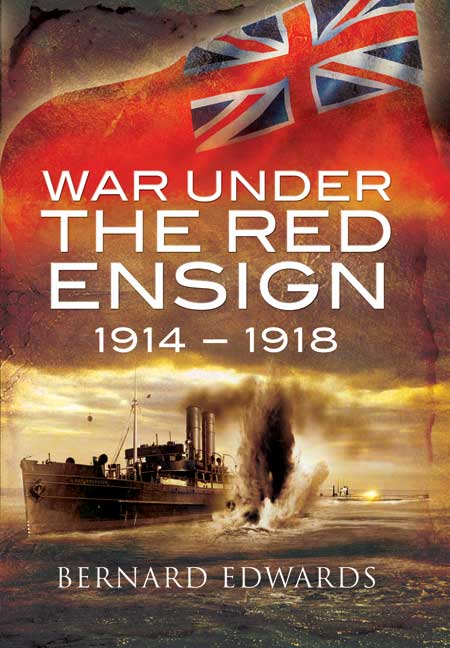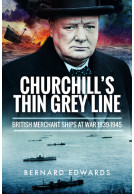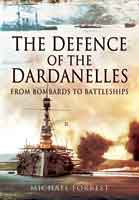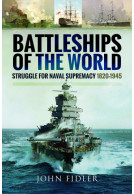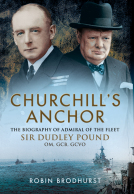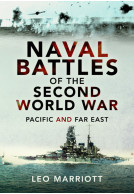War Under The Red Ensign 1914 1918 (Hardback)
Imprint: Pen & Sword Maritime
Pages: 160
ISBN: 9781848842298
Published: 30th August 2010
(click here for international delivery rates)
Need a currency converter? Check XE.com for live rates
| Other formats available - Buy the Hardback and get the eBook for free! | Price |
|---|---|
| War Under The Red Ensign 1914… ePub (2.2 MB) Add to Basket | £4.99 |
The Kaiser's determination to starve Britain into surrender and the development of his Navy and the U-boats in particular meant that Britain's merchant navy was in the front line throughout the Great War.This book charts the progress of the war at sea which began with the sinking of the oil tanker San Wilfrido off Cuxhaven only eight hours after the official declaration of war. The merchantman Glitra was the first victim of a German U-boat (U-17) on 20 October 1914 she was to be joined by many, many more.As the war on land intensified so the naval struggle grew ever more bitter. As vividly described there were many incidents of atrocious behaviour, amounting to war crimes, by the attackers against their hapless victims; sinking of lifeboats, machine-gunning of survivors, attacks without any warning designed to cause maximum casualties.We learn of instances where the weak gallantly fought back such as the duel between Captain Bissett-Smith s Otaki (with one gun) and the heavily armed German surface raider Möwe. Although he went down with his ship, Captain Smith was posthumously awarded the VC, and remains the only merchant seaman so honoured.War under the Red Ensign contains many inspiring and shocking accounts of war at sea and is a gripping read.
Plenty of books have been written about the Merchant Navy's role in World War Two. However, not so many come out of the First World War. This is one of the best. As in World War Two, the German Navy's submarines were well prepared at the outbreak of the First War. Its U-boat fleet was dispersed and looking for prey. It took only eight hours from the declaration of war until their first sinking. The merchant ship 'San Wilfrido', a tanker, sunk off Cuxhaven was the first victim. At that time the world, including most merchant mariners, was almost completely unaware of the lethality of submarines. The learning process was not lengthy. Submarines were not, of course, the only menace. While the main German battle fleet was not, as in World War Two, effectively used, German surface raiders did considerable damage. For those employed on Allied ships in World War ONe, life was nasty, brutish and frequently, short. This excellent book sums it up very well.
Ausmarine
In their effort to starve Britain into surrender the Germans targeted the Merchant Navy, and as the war on land intensified so too did the battle at sea. Here the author details the war of the merchant fleet and the sinking of its lifeboats, the machine-gunning of survivors and the attacks launched without warning against hapless victims, often undefended as they sought to bring the lifeblood of supplies to Britain.
The Great War Magazine
At the start of the First World War, Britain had 43% of the world's shipping, all of it protected by a powerful Royal Navy. The Navy itself was a massive organisation that included 50 dreadnought battleships and 550 destroyers and many other types of craft, including submarines. Yet it was to be the German submarines or U-Boats, that were to dominate the lives of the merchant seamen over the four years of conflict. It appeared that there was little the Royal Navy could do to stop the slaughter of merchant ships and men.
Nautical Magazine
In this important work the author has redressed the lack of information about the heroism of the Merchant Navy in the First World War. He describes how, initially, it was surface raiders that were the major threat to the MN. Raiders accounted for 40 ships in the first five months of the war. Operational U-Boats at this time concentrated their attacks on RN ships and had major successes. As the author explains in chapter two, the Naval High Command of German U-Boats insisted that they operated under Prize Rules. This meant that intercepted merchant ships had to be stopped, their crews given an opportunity to reach safety before the vessel could be torpedoed or shelled. Such actions of course placed the attacking U-Boats in a vulnerable position to a counter attack.
In a chapter entitled "The Pace Quickens", the writer describes how almost by accident individual German commanders chose to ignore these Prize Rules, and thus unrestricted wargare became the norm. Certainly, by February 1915 compliance with the long established Prize Rules was effectively abandoned. The Germans were in their stride and, having new and improved U-Boats, British Merchant ship losses increased at an alarming rate. German U-Boat tactics became more aggressive as unrestricted warfare was formally adopted following stalemate on the western front. The Germans concluded that the only change of victory was to strangle British sea trade by destroying her Merchant fleet and basically forcing starvation on the civilian population.
It is now well known that the use of convoys considerably reduced the chances on U-Boat attack, but the Admiralty resisted convoying for a long time. By April 1917, with an average of ten ships being lost a day and food supplies at a dangerously low level, something had to be done. Convoys were introduced in May 1917 and shipping losses immediately began to fall. Prior to this the war at sea had become vicious and cruel. In a chapter entitled "Slaughter of the Innocents" the author details the harrowing experiences of the crew of the SS Torrington when it encountered U-55.
As expected in a book by this author, the attention to detail and meticulous research is evident. He gives details of the ships, their voyage plans, type of cargo and whether carrying passengers, etc. There are a number of black and white photographs in this 208-page book that give a poignant but balanced representation of the ships and men on both sides of this conflict. Many books have been written on the U-Boat campaigns of the Second World War, but not so many on the First War. This book therefore fills an important gap, and clearly demonstrates the courage and steadfastness of the crews of merchant shops faced with an unexpected and ruthless form of warfare.
War Under the Red Ensign is well written, nicely illustrated, informative and easy to read. I thoroughly enjoyed this book.
Robert Widders Blog
About Bernard Edwards
Bernard Edwards pursued a sea-going career commanding ships trading worldwide. After nearly forty years afloat. Captain Edwards settled in a tiny village in rural South Wales, to pursue his second career as a writer. His extensive knowledge of the sea and ships has enabled him to produce many authentic and eminently readable books which have received international recognition. Beware Raiders!, Attack and Sink!, The Cruel Sea Retold, The Quiet Heroes, Twilight of the U-Boats, Death in the Doldrums, The Road to Russia, The Wolf Packs Gather, The Decoys and U-boats Beyond Biscay have been published by Pen and Sword Books.







